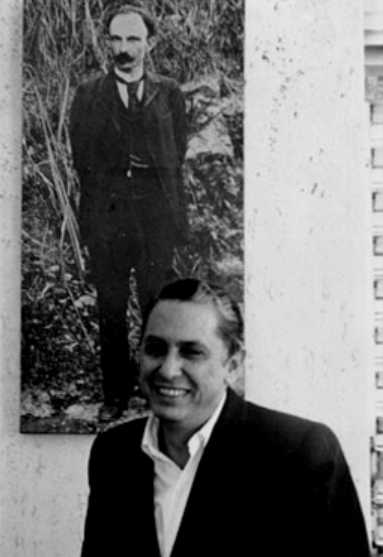4.1.2.9.2 “Thirsty Date” (1944) and other poetry collections by Cintio Vitier (1921 – 2009)

In “Sedienta cita” (Thirsty Appointment), the themes of his previous poetic production are maintained, where the strangeness of reality and of events as such, the passage of time and his own being, sometimes seem to him to be an unknown substance and which he tries to grasp in every sense, developing further the fruitful side, as has already been expressed, not only in the placid but also through the painful side of reality.
The poem that gives the text its title reveals new lyrical discoveries and thematic incorporations of reality, based on his approach to César Vallejo and José Lezama Lima, as Vitier himself would point out; but all of this from an expressive cosmos made of himself, although open to the flow of life and poetry, both on and off the Island:
“I quote the stars verbatim
and the complex home of the wounded orange.
Tiny is the light in which the ox hides
far from the bird, eternally sunbathing
the studious hands of the guajiro,
her ten claws sound of digging the wind.
Where have I been, what is this, that was so much,
why suffer lute or lime or cold manure
the voracity of my heart spreads into stones.
Oh, the golden mules of their dead shore!
I see my face in the crude broken glass,
on the broken spur, in the light snow of the wicker chair.
I quote the unusual feeling of the vanished clouds.
What your flora, what pain, what shackled and free touch
Descend, strict golden judge, and sing.
Yes, descend, cloth of the moon, upon a filthy beggar,
and stripping it down to its flowers or laughter or planets he sings:
graceful night of all, wing of all, lazy dog.”
In this poem, perhaps the most accomplished in the collection, we see the search for the meaning of events, before which the poet seems to feel naked in his interrogation, always seeking to decipher the enigma of life. We can already see here a poetics that has moved away from purist essences and the mere taste of the word to delve, in a way, into the impurity of reality.
A year later, he published “Extrañeza de estar” (Strangeness of Being), the title of which indicates a sentiment inherent to Cintio’s poetry, especially in the sense of fully connecting with his circumstances. Reality seen as a dream, in the sense of being veiled to the human eye and intellect, shapes the poem entitled “Un hombre, un cruel tamaño” (A Man, a Cruel Size), from which the final section is transcribed:
“(…)
What a strange thing to be. What a disquiet.
from hearing the fantasy table
as I press the clock and the ship burns
and that eternal one remains in his penury.
I leave it to chance to unlock that treasure:
memory quickly torn apart,
song of his wound.
I don’t know if it’s innocence that I long for,
whether it is god, fleetingness or sword
the ecstasy I express of life.
I look again at the man on the world,
and again only these eyes dream
endless dreamlike rock
funeral and lost creature.
I do not rely on her soul or her sex.
With eucalyptus bristling, with remains
of sphinxes and the most baroque night
that the dream reveals my madness.”
In 1944, the magazine Orígenes began publication, and in its very first issue appeared some of Cintio’s verses, entitled “Esfinge fugaz.” The work of the Orígenes group in general and that of Vitier in particular mutually influenced each other, especially in terms of a poetics that was not monolithic but rather interconnected in terms of its connection with reality and the transcendent meaning of poetry.








